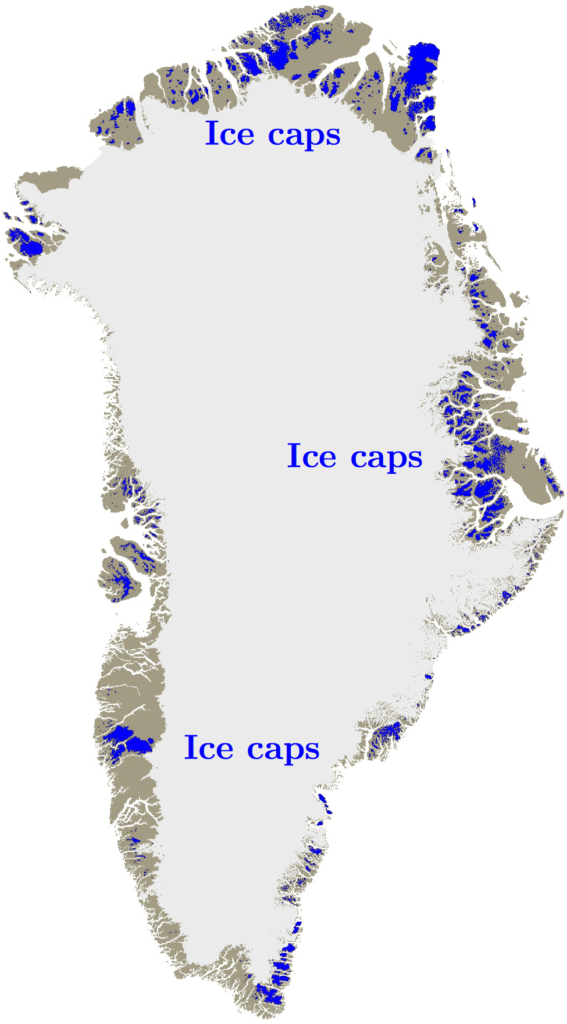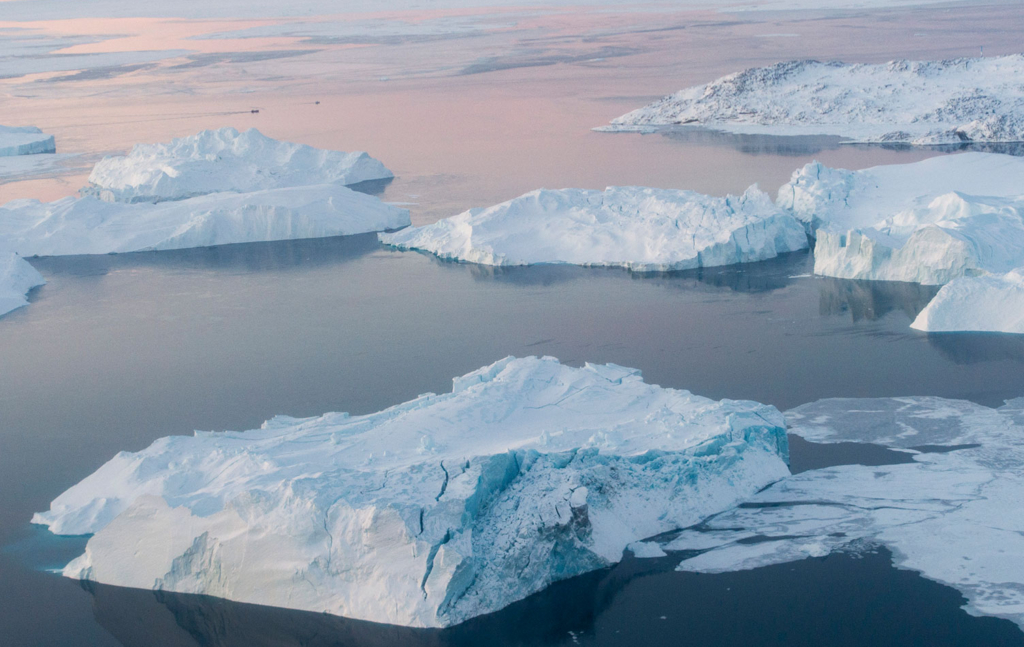Ice caps Greenland crossed tipping point
Ice caps in Greenland have lost their natural capacity to contain and refreeze meltwater. This mechanism of ice caps to remain stable broke down around 1997, when the snow cover on the ice caps became completely saturated with refrozen meltwater. Having passed a tipping point, the rate of mass loss of the ice caps has accelerated irreversibly, conclude climate researchers from Utrecht University in an innovative new NESSC-study published on Friday in Nature Communications.
Brice Noël, PhD candidate at Utrecht University and lead author of the publication, expects that the meltwater run-off will only increase the coming years. “The highest ice caps are still relatively healthy at the moment. However, we see melting occur higher and higher. That’s a big problem, because that ‘melting line’ is moving towards the altitude where most of the ice mass is.”

Increasing mass loss
Noël and his colleagues focussed specifically on 12 ice caps of Greenland, situated around the edges of the island. Noël developed a detailed model which allowed him to properly study the topographically complex ice caps. The climate scientists found that all investigated ice caps have been losing mass since 1997, with increases in meltwater run-off varying from 17% in the south to 74% in the northernmost area. Currently, Greenland’s ice caps are losing about three times as much mass per year as they were prior to 1997.
”The new model shows a striking agreement with satellite observations,” says Utrecht researcher Bert Wouters who computed changes in the volume of the ice caps using height measurements made by satellites, such as the European CryoSat-2 mission. ”This gives us confidence that the model is reliably reproducing the ongoing changes.”
Tipping point
Noël also analysed a number of variables which influence the underlying causalities of ice loss. The researchers found that the mass loss correlates directly with meltwater run-off, which is in turn directly influenced by an increase in temperature.
The findings show that until 1997 Greenland’s ice caps were able to contain and refreeze enough meltwater to remain stable, even with temperature fluctuations. In summer, a healthy ice cap is able to absorb meltwater in the tens of metres of tightly packed snow layer on the ice. Meltwater refreezes during winter, causing the total mass of the ice cap to remain more or less stable from year to year.
However, rising temperatures have so much increased the amount of meltwater that the snow layer is completely saturated with refrozen meltwater. Having crossed this tipping point, new meltwater cannot be absorbed by the snow anymore and causing it to run off into the sea.

Sea level rise
Greenland’s ice caps measure almost 100,000 km2 in total (about twice the size of the Netherlands) and represent the largest ice masses on earth, apart from the large ice sheets of Greenland and Antarctica. It is estimated that the current melting of Greenland’s ice forms about one third of today’s sea level rise. In a scenario of continued global warming, the ice caps around Greenland’s edges may lose one fifth to one quarter of their volume by the year 2100, which would add an extra 4 cm of sea level rise.
Noël indicates that the main ice sheet in the interior of Greenland appears stable so far. “The main ice sheet is much more elevated and isn’t doing too bad yet,” Noël says. “But we can already see an increase in the altitude of the ‘melting line’ there as well.”
For additional background information on the publication , you can visit this website.
Article
‘A tipping point in refreezing accelerates mass loss of Greenland’s glaciers and ice caps’
Nature Communications 2017. DOI: 10.1038/NCOMMS14730
Brice Noël, W. J. van de Berg, S. Lhermitte, B. Wouters, H. Machguth, I. Howat, M. Citterio, G. Moholdt, J. T. M. Lenaerts & M. R. van den Broeke

